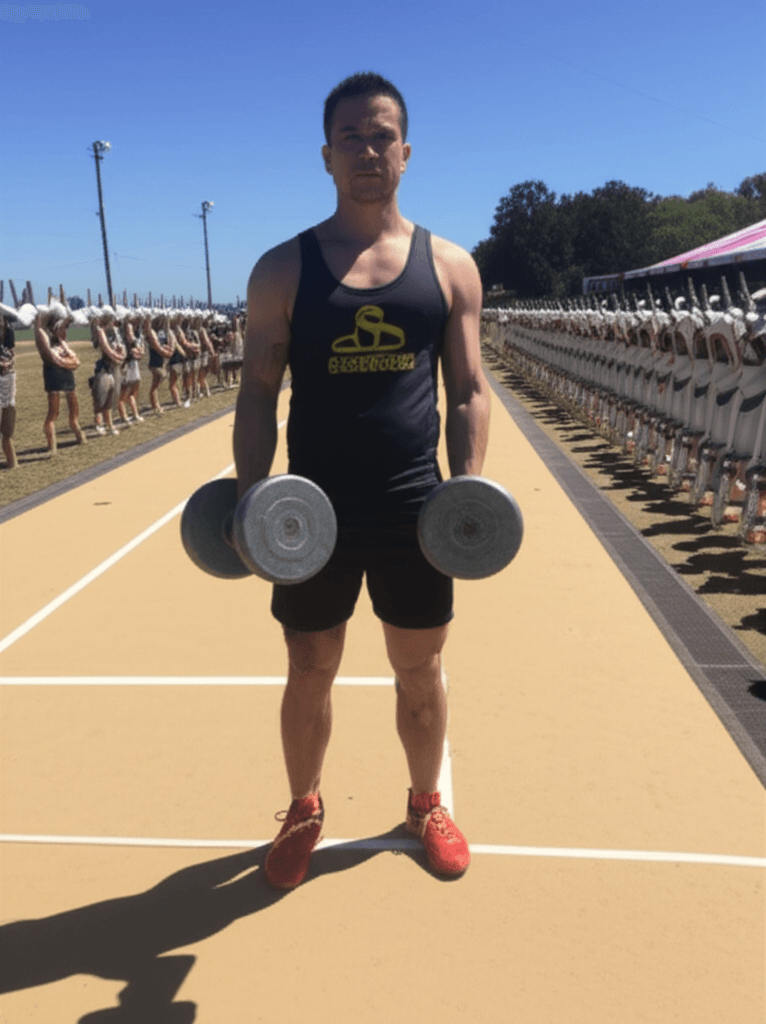Forget the myths about women getting “bulky” from lifting weights. This outdated notion often deters women from embracing the incredibly beneficial journey of building lean muscle mass. In reality, due to significantly lower testosterone levels compared to men, women typically build a toned, strong, and athletic physique, not an overly muscular one, unless they specifically train and diet for extreme bodybuilding or use performance-enhancing drugs. Embracing a lifestyle focused on smarter fueling and better training unlocks a wealth of benefits for women, from enhanced physical function and metabolic health to improved mental well-being and a reduced risk of age-related diseases.
This guide will break down the science-backed strategies for women to optimize their nutrition and training, leading to effective lean muscle gain, increased strength, and improved overall health at every age.

Smarter Fueling: The Foundation of Female Muscle Growth
Building lean muscle for women requires a strategic approach to nutrition that prioritizes adequate calories and a balanced intake of macronutrients. Your diet provides the essential raw materials for muscle development and repair, making it as crucial as your workouts.
Caloric Intake: Fueling for Growth
To build new muscle tissue, your body needs a caloric surplus – meaning you consume slightly more calories than you burn. This additional energy fuels muscle protein synthesis, the process by which your body repairs and builds muscle fibers after exercise. A good starting point for a lean bulk is to eat 250-300 calories more than your maintenance calories. However, simply eating more junk food will lead to fat gain, not lean muscle; focus on nutrient-dense, whole foods.
Macronutrients for Women’s Muscle Growth
Macronutrients—protein, carbohydrates, and fats—are vital for energy, muscle growth, metabolism, and overall health. Tracking your macronutrients (macros) can help you be more precise with your nutrition and see better results.
Protein: The Building Blocks
Protein is paramount for muscle growth and repair, as it provides the amino acids necessary to rebuild muscle fibers that experience micro-tears during strength training. For women aiming to build lean muscle, a recommended daily intake is approximately 1.6 to 2.2 grams of protein per kilogram of body weight (0.7-1.0 grams per pound of body weight).Distribute protein intake evenly throughout the day, aiming for at least 25 grams of complete protein per meal. Good sources include lean meats (chicken, turkey, beef), fish (salmon, tuna), eggs, dairy products (cottage cheese, Greek yogurt), pulses, lentils, and plant-based proteins like quinoa and sprouts. Protein powder can be a convenient supplement to meet daily requirements, especially post-workout.
Carbohydrates: Essential for Energy and Performance
Carbohydrates are your body’s primary energy source, fueling high-intensity workouts and replenishing muscle glycogen stores post-exercise, which is crucial for recovery and growth. Avoiding low-carb diets when building muscle is advisable, as the body may convert protein into fuel, leading to muscle loss.For optimal muscle gain, carbohydrates should constitute around 40-50% of your total daily calories. Prioritize complex carbohydrates such as quinoa, sweet potatoes, oats, brown rice, whole-grain breads, fruits, and vegetables for sustained energy without blood sugar spikes.
Healthy Fats: Hormonal Balance and Satiety
Healthy fats play a crucial role in hormonal balance, nutrient absorption, and satiety. Many women underestimate their importance in muscle building. They are linked to muscle preservation and hormone function.Aim for 20-30% of your daily calories from healthy fats. Sources include avocados, nuts, seeds, olive oil, and fatty fish rich in omega-3s like salmon. A slightly higher fat intake can be particularly beneficial for women to support estrogen production and metabolic flexibility, especially during perimenopause or menopause.
Micronutrients and Hydration
While macros get much of the attention, vitamins and minerals (micronutrients) are essential for overall bodily function, including oxygen transport, toxin removal, and muscle feeding. Ensure a diverse diet rich in fruits, vegetables, and whole foods to cover your micronutrient needs.
Hydration is also critical for performance and preventing dehydration-related issues. Water makes up 60-70% of an athlete’s body mass and is essential for regulating body temperature and maintaining blood plasma volume during exercise. Women generally need about 91 ounces (11 cups) of fluid daily, but athletes require more to replace sweat losses, depending on exercise intensity, duration, and climate. Drink 4-8 ounces of fluid every 15-20 minutes during exercise, and replenish with 2.5-3 cups of fluid for every pound of weight lost post-workout. Don’t rely solely on thirst, as you may already be dehydrated by then; instead, drink fluids until your urine is pale yellow. Adding electrolytes during exercise, especially in hot conditions, can also be beneficial.

Training Better: Principles for Lean Muscle Mass
Effective training for women building lean muscle mass focuses on resistance training principles that progressively challenge the muscles.
Strength Training Principles for Women
Strength training, also known as resistance training or weightlifting, involves using weights, resistance bands, or bodyweight exercises to build muscle mass and physical strength.
Progressive Overload: The Golden Rule
Progressive overload is the most fundamental principle for continuous muscle growth and strength gains. It means gradually increasing the demands placed on your muscles over time to prevent plateaus. If you don’t continually challenge your body, it won’t adapt and grow stronger.Ways to apply progressive overload include:
- Increasing the weight: The most direct method; aim for a 2.5-5% increase for upper body lifts and 5-10% for lower body lifts every few weeks.
- Increasing repetitions (reps) or sets: If increasing weight isn’t feasible, add more reps within a set or add an extra set. For muscle growth, 3-5 sets of 8-12 reps with moderately heavy weight is often recommended.
- Improving form and range of motion: Perfecting technique makes exercises more effective and challenging.
- Slowing down tempo (time under tension): Increasing the duration of each rep can intensify the exercise.
- Reducing rest time: Shorter rest periods between sets can increase overall intensity.
Compound Movements:
Prioritize compound exercises that involve multiple joints and muscle groups, such as squats, deadlifts, lunges, bench presses, and dumbbell rows. These movements are highly effective because they require more energy, produce a higher anabolic (muscle-building) response, and work stabilizing muscles, leading to greater overall strength, hypertrophy, and reduced injury risk.Consistency and Frequency:
Consistency is paramount to seeing results. Aim for at least two to three strength training sessions per week, gradually increasing frequency as your body adapts. Tracking your workouts in a journal helps monitor progress and ensure you’re applying progressive overload effectively.Proper Form:
No matter the weight or exercise, proper form is essential to effectively target the intended muscles, prevent injury, and maximize gains. If unsure, consider consulting a fitness professional.
Cardio Considerations
While strength training is key for muscle building, cardio also plays a role in overall fitness and fat burning, which helps reveal muscle definition. Incorporate cardio to support heart health and aid in weight management, but don’t let it overshadow your strength training efforts.
Recovery and Rest: The Unsung Heroes
Muscle growth doesn’t happen in the gym; it happens during recovery. Adequate rest and recovery are critical for muscle repair, rebuilding, and adaptation.
- Sleep: Prioritize 7-9 hours of quality sleep per night. Sleep is when your body produces growth hormones and repairs tissues.
- Active and Passive Recovery: Incorporate rest days and allow at least 48 hours of rest for the same muscle group between training sessions. Active recovery (light activity like walking or stretching) and passive recovery (sleep, nutrition, hydration) are both important. Foam rolling and massage can help reduce soreness and improve flexibility.
- Nutrition Post-Workout: Replenishing carbohydrates within 15 minutes after exercise helps restore muscle glycogen, and consuming protein aids in muscle protein synthesis.

Building Lean Muscle Mass: Addressing Female-Specific Factors
Women’s bodies respond to strength training differently than men’s due to hormonal differences, but this does not hinder the ability to build significant strength and lean mass.
Hormonal Influences on Female Muscle Growth
While women have significantly less testosterone than men (up to 20 times less), which is a primary hormone for muscle growth, estrogen also plays a vital role. Estrogen aids in muscle repair, reduces protein breakdown during exercise, and helps maintain muscle mass and strength. Hormonal fluctuations throughout the menstrual cycle can also influence strength, endurance, and muscle recovery, with muscle strength often peaking during the ovulatory phase when estrogen levels are highest. Understanding these cycles can help women tailor their training and recovery.
Debunking Common Myths for Women’s Muscle Building
- “Lifting weights makes women bulky.” This is a persistent myth. As discussed, women’s hormonal profiles naturally prevent “bulking up” like men, resulting instead in a lean, toned, and strong physique.
- “Women should only use light weights with many reps for toning.” This is also a misconception. To build muscle and increase strength, women benefit significantly from lifting heavier weights with proper form, challenging their muscles effectively to stimulate growth.
- “Muscle turns to fat if you stop exercising.” Muscle and fat are different types of tissue and cannot convert into one another. While muscle mass may decrease if you stop exercising, it won’t magically become fat.
Benefits Beyond Aesthetics
Building lean muscle mass offers a wide array of health benefits that extend far beyond a “toned” appearance.
- Increased Metabolism and Weight Management: Muscle tissue is metabolically active, burning more calories at rest than fat tissue. The more lean muscle you have, the faster your resting metabolism, which aids in weight management and fat loss.
- Stronger Bones and Osteoporosis Prevention: Strength training activates bone-forming cells, increasing bone density and significantly reducing the risk of osteoporosis, especially important as women age and experience hormonal changes like menopause.
- Improved Functional Strength and Mobility: Building muscle makes everyday activities easier, improves balance, coordination, and range of motion, and reduces the risk of falls and injuries.
- Enhanced Mental Health: Regular strength training can boost self-confidence, improve mood, reduce symptoms of anxiety and depression, and sharpen cognitive skills.
- Better Management of Chronic Conditions: Strength training can help manage conditions like arthritis, back pain, and type 2 diabetes by improving blood sugar regulation and reducing inflammation.
By adopting a holistic approach that integrates smart nutrition with effective, progressive strength training and adequate recovery, women can successfully fuel their bodies, train better, and build lean muscle mass, unlocking a lifetime of strength, health, and confidence.







